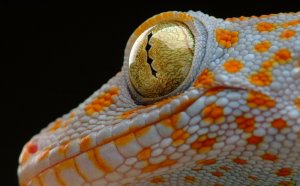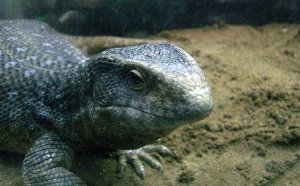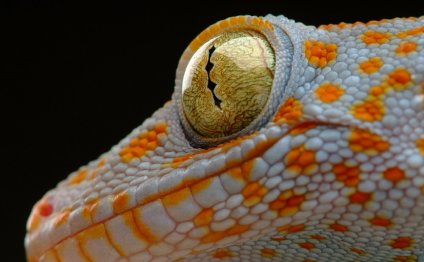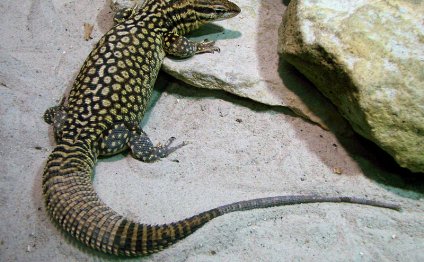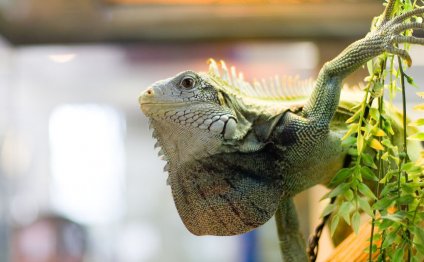
Easy pet Reptiles
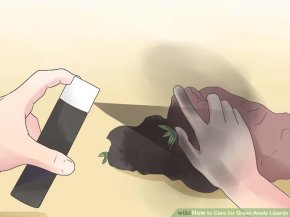
Steps
- Prepare the artificial environment before purchasing the green anole. The size of the container used will be dependent on whether you're keeping one anole or a community of anoles. A typical container will be a tall vivarium or a tank. Inside the vivarium, be sure to supply plenty of plants (either real or artificial, or a mixture of both) and basking items such as branches or smooth rocks.
- For a community consisting of one male and four females (known as a "harem"), the size of the container should be approximately 36 x 24 x 12 inches or 90 x 60 x 30cm. The height of the container is important, to allow for climbing around.
- Fill the vivarium or tank evenly one or more inches or 2.5-5 centimeters with sterilized reptile bark big enough that it cannot fit in the anole's mouth. Never use unsterilized bark or floor covering you're not sure about; ask the pet store or your vet for advice if you're unsure.
- Always use a tank cover. Other pets (like cats) like to 'play' with anoles and this usually means death for an escaped anole.
- Provide a suitable temperature range for the anoles. Anoles need to be in a daily temperature range of approximately 75-86ºF / 24–30ºC. Use full spectrum lighting to ensure the healthy development of both anoles and the live plants. The nighttime temperature can drop to 68ºF / 20ºC but no lower.
- Like people, anoles can fall asleep in the sun for longer than they intended to. While they like long days, you should still put a timer on their grow light so that it is on for 12 hours a day, so they can get 12 hours of darkness but there needs to be a black light on during the night as they will freeze if no warmth is added.
- Decide on how many anoles you will keep. It's easiest to keep one anole and if you want more than one, you will need to be careful to only have one male in the one vivarium at any time as males fight. Moreover, unless you want to start breeding, avoid a male and female combination; opting for two females is likely to be the best; usually females do fine together, and may "snuggle" up to one another occasionally. If you're breeding anoles, the harem is ideal with four females and one male.
- When younger, it is sometimes difficult to determine the sex of your lizards. Males always have a throat fan (or dewlap) underneath their throat that inflates into a red frill for mating/territory display on occasion. When older, males are typically larger and have longer snouts than females. Males also will have two large "scales" on their stomach at the base of their tail. Males have two bumps on the bottom base of the tail and females have only one or none. Males also tend to be more colorful than females.
- Be aware that not everyone agrees that anoles are sociable enough to live in a close vivarium or tank community where they can't get away from each other. Some people believe that anoles should be kept separate from one another in different tanks or containers.
 This type of setup is more comfortable for the individuals inhabiting the tanks, and not as unnatural, therefore, it is less stressful and more healthy for the anoles. However, if you do keep them in the one vivarium, always provide many basking spots so as to avoid competition. And be aware, that unless it's breeding season, opposite sex anoles may be very stressed if kept in a single container; talk to your vet if you have any concerns.
This type of setup is more comfortable for the individuals inhabiting the tanks, and not as unnatural, therefore, it is less stressful and more healthy for the anoles. However, if you do keep them in the one vivarium, always provide many basking spots so as to avoid competition. And be aware, that unless it's breeding season, opposite sex anoles may be very stressed if kept in a single container; talk to your vet if you have any concerns.
- Purchase an anole. Choose a reputable place to buy the anole from and be sure that you can check the anole before purchase. When buying an anole, make sure to check for parasites, sluggishness, and their body weight. This latter can be ascertained by looking for obvious ribs showing. An unhealthy anole will have sunken-in cheek areas and will look much like a skeleton with skin. Make sure that your anole is in a tank of it's own when you buy it, or check the others for signs of stress, parasites, loose droppings, missing tails, and coloration. A green colored anole is less stressed out, and therefore a healthier specimen. (Slow anoles may just be cold, or it may be too hot. It all depends on their surroundings.)
- Use common sense when choosing a new pet. Don't pick the smallest, skinniest anole because you "feel bad for him." Chances are you'll feel worse for him when you have to bury him in a shoe box in your garden.
- Feed and water the anoles. Anoles are insectivores and the size of insects they'll eat ranges from small to medium. Anoles need a minimum of twice weekly feeding and preferably every 2 to 3 days, or ask for advice from your vet. If you have more than one anole, it is vital that you keep an eye to see that each anole gets several insects every feeding. The food must be live – canned foods will not be eaten since it is lifeless and won't compete with your anole – so here are some suggestions on what to feed:
- Feed crickets.
 One meal anoles enjoy is cricket; buy the smallest cricket offered, and if there is only "one size" at a pet store, go to a different one. Dust the crickets with a supplement powder at each feeding to help ensure the anoles get enough calcium and vitamins (anoles missing the key nutrients can get metabolic bone disease (MBD) and die). If you keep crickets around in bulk, "gut-load" them by feeding them a vitamin rich cricket food prior to feeding them to your lizards. This way, all of the nutritious food your crickets just ate will then, in turn, be passed on to your anole. Equally, if your crickets are starved, your anole soon will be too. Baby anoles (should you be breeding them) require micro crickets or tiny fruit flies.
One meal anoles enjoy is cricket; buy the smallest cricket offered, and if there is only "one size" at a pet store, go to a different one. Dust the crickets with a supplement powder at each feeding to help ensure the anoles get enough calcium and vitamins (anoles missing the key nutrients can get metabolic bone disease (MBD) and die). If you keep crickets around in bulk, "gut-load" them by feeding them a vitamin rich cricket food prior to feeding them to your lizards. This way, all of the nutritious food your crickets just ate will then, in turn, be passed on to your anole. Equally, if your crickets are starved, your anole soon will be too. Baby anoles (should you be breeding them) require micro crickets or tiny fruit flies. - Occasional fast prey like small cockroaches or flies will give your lizards some much needed exercise.
- Avoid feeding anoles with mealworms. These pass through them undigested, wasting energy in eating and not getting any energy from the food.
- Anoles prefer to get their water in the form of droplets off plants. As such, daily misting is an essential activity in the vivarium. Mist both the anoles and the plants for 10 seconds 2 to 3 times a day. If you can't remember to do this or don't want to, have an automated mister or drip system installed.
- Green anoles like to have their food in separate quarters than their homes unless it's feeding time. This way the "leftovers" won't munch on your lizard while he's asleep and medium to large crickets can eat the anole's extremities.
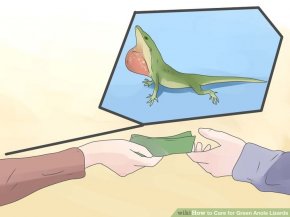 If you place the crickets in a low feeding dish, make sure the crickets you put in the container aren't hiding under food bowls and such and your anole will be thankful that they aren't ganging up on him in the night! If they're small enough, they probably won't bother your anole but some owners of anoles advise to never release or leave crickets loose in the tank with the lizard but rather to place them in a separate container, move the anole to the container for 5–10 minutes to eat and then move the anole back to his tank when done.
If you place the crickets in a low feeding dish, make sure the crickets you put in the container aren't hiding under food bowls and such and your anole will be thankful that they aren't ganging up on him in the night! If they're small enough, they probably won't bother your anole but some owners of anoles advise to never release or leave crickets loose in the tank with the lizard but rather to place them in a separate container, move the anole to the container for 5–10 minutes to eat and then move the anole back to his tank when done. - The anole must have proper vitamins and calcium; since it eats feeder insects all of the lizards extra nutrients must be contained in those insects. Give the lizard UVB light (full spectrum) so the anole can regulate its vitamin balance. Make sure it's rated for the tank size and the anole. (Replace these special bulbs every few months even if they are still producing light. After a while they will stop making UVA and UVB.)
- Feed crickets.
- Keep the vivarium or tank cleaned regularly. Reptiles in captivity are susceptible to germs and debris that builds up over time in their containers. It is important to maintain and clean their home regularly, at least weekly. And leftover, uneaten food should always be removed after mealtime.
- Keep a watch out for health problems and be active about averting any potential concerns. Some anoles will get infections on their snout along the mouth. This can be cleaned by gingerly and delicately wiping the snout with a cotton swab barely wetted in either hydrogen peroxide or Neosporin® (an antibiotic ointment) or ask your vet for a reptile-suitable product. Do not do this more than once a day and not for more than a few days. Don't force the treatment on them though; if they try to dodge you, let them, as it is likely that the stress of this procedure will harm them more. Instead, try keeping the container cleaner, and maybe drier if it happens to be too moist.
- Kill any red spider mites that you see in the tank. An insecticidal soap can be made out of ivory soap shavings, tepid water, and vegetable oil shaken in a spray bottle. They are to anoles what ticks are to us.
- Make sure to get rid of any mold growth the second you see it! Don't hesitate by "waiting to see what happens" because your anole will suffer and probably die.
- Handle with care. It is possible to handle an anole and even have it eat from your hand. The anole may learn to sit on your hand in exchange for a treat but don't put the anole there. Instead, allow it to crawl onto your hand of its own volition, as this is much less stressful for it. Also bear in mind that anoles move very fast and are very agile, so don't handle it anywhere it might escape from. On the whole though, an anole is much more of a pet for watching than for holding, so keep handling to a minimum.
- If you need to move an anole (and this may be for feeding and cleaning purposes at the very least), be very gentle. Grip firmly but very gently and move him without delay.
- Always wash your hands after handling the green anole, as with any reptile or pet. In addition, wash your hands after handling any bedding or tank decorations to prevent the spread of salmonella. While this disease won't usually show on a reptile (more often the aquatic species like turtles will carry salmonella) and you are usually safe when dealing with arboreal "live off the ground" creatures like the green anole, better safe than sorry.
- If you want to hold your anole and it bites you, don't panic and don't jerk or you will break its jaw!
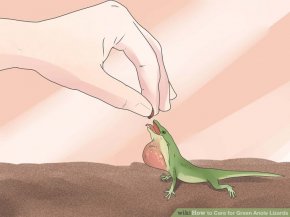
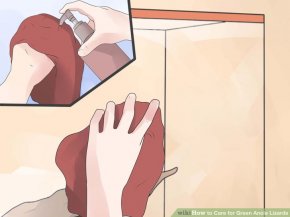
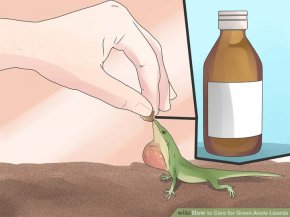
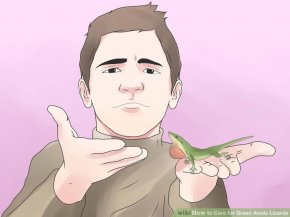
Source: www.wikihow.com
RELATED VIDEO

Easy Reptile Hides

Easy Reptile Sales Using Facebook

6 Cool Facts about Green/Brown Anoles | Pet Reptiles
Share this Post
Related posts
Colorful lizard
APRIL 29, 2024
A very large species of chameleon that is endemic to forests in eastern and northern Madagascar. They reach up to 68 cm (27…
Read MoreBest pet Reptiles
APRIL 29, 2024
Leopard Geckos and Bearded Dragons have stellar reputations among lizard enthusiasts. In fact, they come as close to being…
Read More